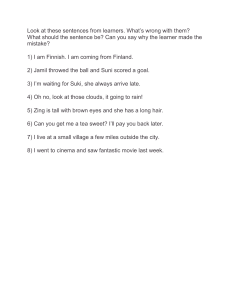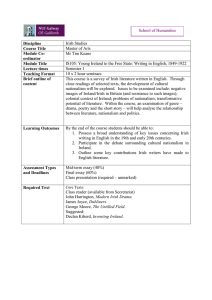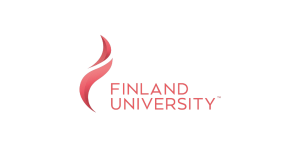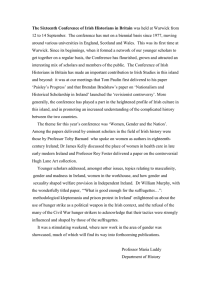My personal experience in ETWINNING
advertisement
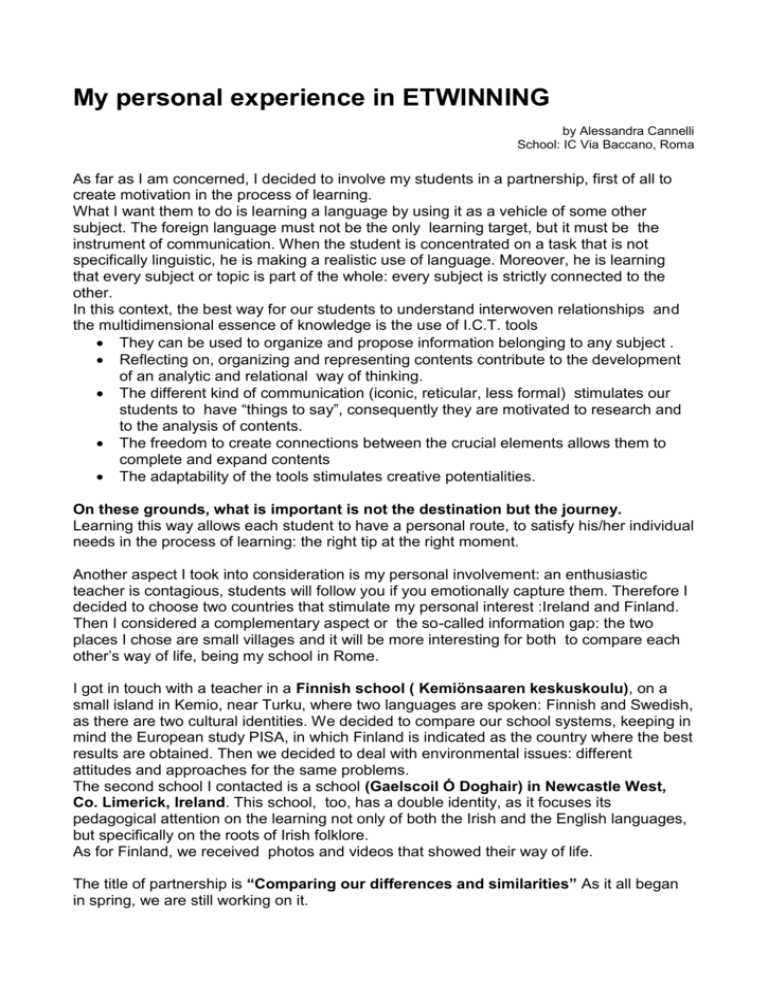
My personal experience in ETWINNING by Alessandra Cannelli School: IC Via Baccano, Roma As far as I am concerned, I decided to involve my students in a partnership, first of all to create motivation in the process of learning. What I want them to do is learning a language by using it as a vehicle of some other subject. The foreign language must not be the only learning target, but it must be the instrument of communication. When the student is concentrated on a task that is not specifically linguistic, he is making a realistic use of language. Moreover, he is learning that every subject or topic is part of the whole: every subject is strictly connected to the other. In this context, the best way for our students to understand interwoven relationships and the multidimensional essence of knowledge is the use of I.C.T. tools They can be used to organize and propose information belonging to any subject . Reflecting on, organizing and representing contents contribute to the development of an analytic and relational way of thinking. The different kind of communication (iconic, reticular, less formal) stimulates our students to have “things to say”, consequently they are motivated to research and to the analysis of contents. The freedom to create connections between the crucial elements allows them to complete and expand contents The adaptability of the tools stimulates creative potentialities. On these grounds, what is important is not the destination but the journey. Learning this way allows each student to have a personal route, to satisfy his/her individual needs in the process of learning: the right tip at the right moment. Another aspect I took into consideration is my personal involvement: an enthusiastic teacher is contagious, students will follow you if you emotionally capture them. Therefore I decided to choose two countries that stimulate my personal interest :Ireland and Finland. Then I considered a complementary aspect or the so-called information gap: the two places I chose are small villages and it will be more interesting for both to compare each other’s way of life, being my school in Rome. I got in touch with a teacher in a Finnish school ( Kemiönsaaren keskuskoulu), on a small island in Kemio, near Turku, where two languages are spoken: Finnish and Swedish, as there are two cultural identities. We decided to compare our school systems, keeping in mind the European study PISA, in which Finland is indicated as the country where the best results are obtained. Then we decided to deal with environmental issues: different attitudes and approaches for the same problems. The second school I contacted is a school (Gaelscoil Ó Doghair) in Newcastle West, Co. Limerick, Ireland. This school, too, has a double identity, as it focuses its pedagogical attention on the learning not only of both the Irish and the English languages, but specifically on the roots of Irish folklore. As for Finland, we received photos and videos that showed their way of life. The title of partnership is “Comparing our differences and similarities” As it all began in spring, we are still working on it. The second title is “Exploring WHO we are and what it means to be European citizen”. We were invited to send a legend or a story that represents our past and our country recorded by our students, to be inserted on the Irish school web-site. A long discussion was held by my students and eventually they agreed on Romulus and Remus, the story was summarized, translated and recorded on a cd that is now going to be sent. Before all this, we worked together with the geography teacher in group work to gather information on both the countries and every student took part in the realization of graphic material and texts in order to reinforce the usual learning process. What really meant for them was the comparing activity that highlighted aspects unnoticed before. Furthermore, in a world based on communication by media it is essential to create a critical approach, whereas usually our students are passive users. This work enlarged the teachers’ horizon, too, creating continuous contacts not only dealing with the partnership, but about resources, the teachers’ role in different European countries, and developed stimula towards an improvement by means of projects of the ICT tools our school possesses. What is important is not only reaching objectives, but trying different ways to reach them.






